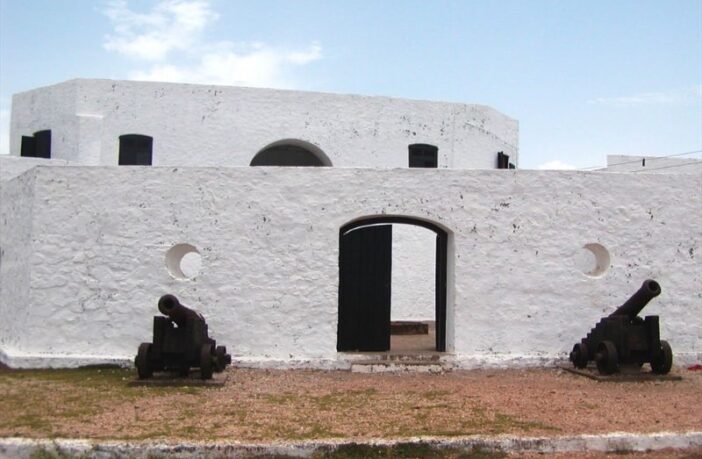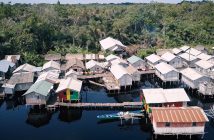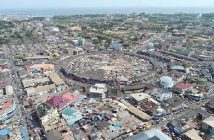Until 1670, there was no fort for the west of the River Ankobra in Beyin (now in the Western Region of Ghana), except for the temporary French fort at Assini. All goods gold and slaves were brought to the coast, where captains of all nationalities haggled fervently for it.
The name Apollonia, chosen for the fort, was first brought upon on the area by the Portuguese explorer who sighted the place on St. Apollonia’s day.
The fort was built to ward off Dutch colonial ambitions which had led to intermittent warfare in the Nzema country (Apollonia), and to facilitate trade. The Nzema Chief Amenihyia then granted the English Committee of Merchants permission to build a fort at Beyin on an elevated platform known as Cape Apollonia. In 1766, the quest for building materials began; construction ensued two years later on the last fort in the Gold Coast to be built by the English. The name of the fort was first bestowed on the area by a Portuguese explorer who first caught sight of the place on St. Apollonia’s Day.
The abolition of the slave trade diminished the economic importance of the fort, and hence it was abandoned in 1819. It was transferred to the Dutch in 1868 as part of the 1867 exchange of forts agreement between the British and the Dutch. The Dutch renamed it in honour of their monarch Willem III and held it until 1872, when it reverted to the British.
The fort was attacked by a British gunboat in 1873, during a British attack on Beyin on account of its coalition with the Asante Kingdom making the fort fall to ruins. It was rehabilitated in the 1960s by the Ghana Museums and Monuments Board and was used as a rest house.
Fort Apollonia houses the Museum of Nzema Culture and History, which was opened in 2010.
A long sandy beach interrupted by lagoons and swamps characterizes the coastlands west of the mouth of the River Ankobra. At Beyin, however, there is a stretch of flat solid sandy ground above the beach.
The Tano basin and the Ankasa forest in the hinterlands of Beyin are rich in gold and timber, even though the coastlands were unsuitable for fort building and harbours, European nations, especially the French, Dutch and English competed for a foothold in the area.
The English Committee of Merchants, in response to an invitation from the Nzema Chief Amenihyia, built the last English fort above the beach at Beyin. The English employed slave labour. Shortly after the abolition of the slave trade, gradual economic decline set in and the English abandoned the fort in 1819.
In 1868, Fort Apollonian was transferred to the Dutch who renamed it after their monarch, Willem III, and held it till 1872.
The fort’s opening hours are 9:00am to 4:30pm.
Entrance fees are as follows:
Visitor Category Entrance Fee*
Pupils from Primary to JHS 3 GH¢ 0.50
SHS Students GH¢ 1.00
Tertiary Students with ID GH¢ 2.00
Ghanaian Adults GH¢ 5.00
Foreign Children USD 2.00 or its equivalent in Ghana cedis
Foreign Students with ID USD 7.00 or its equivalent in Ghana cedis
Adult Foreigners USD 10.00 or its equivalent in Ghana cedis
*Entrance fees were reviewed in February 2013
REFERENCES
1. Available online at, https://www.ghana.travel/places-to-visit/fort-apollonia/.
2. Available online at, http://www.ghanamuseums.org/forts/fort-appolonia.php





